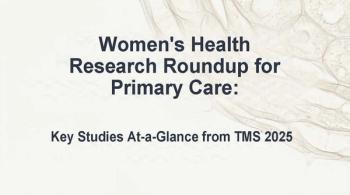
Population-Wide Study Finds No Link Between Aluminum Exposure in Vaccines and Childhood Disorders
The Danish study analyzed a nationwide cohort of 2.1 million children and found no association between aluminum exposure and allergic, autoimmune, or neurodevelopmental conditions.
A nationwide cohort study of more than 1.2 million children in Denmark found no evidence that early childhood exposure to aluminum-adsorbed vaccines increases the risk for autoimmune, allergic, or neurodevelopmental disorders.
The findings, published in the Annals of Internal Medicine, offer robust population-level evidence in the context of long-standing public concerns about aluminum adjuvants in childhood vaccines, study authors wrote.1
“These findings should reassure clinicians and the public that aluminum adjuvants in childhood vaccines are not driving the chronic conditions some have feared,” lead author Anders Hviid, MSc, DMSc, professor and head of department at Statens Serum Institut in Copenhagen, and colleagues wrote. "Even in subgroup and sensitivity analyses—including extended follow-up to age 8—our conclusions remained unchanged.”1
Of the risks for conditions investigated, Hviid et al reported adjusted hazard ratios (HRs) per 1-mg increase in cumulative aluminum exposure by age 2 years of:
- 0.98 (95% CI, 0.94 to 1.02) for autoimmune disorders
- 0.99 (CI, 0.98 to 1.01) for atopic or allergic disorders
- 0.93 (CI, 0.90 to 0.97) for neurodevelopmental disorders
For most outcomes analyzed individually, the researchers found that the upper bounds of the 95% confidence intervals ruled out relative risk increases greater than 10% or 30%, depending on outcome frequency.1
Aluminum Adjuvants in History
Aluminum salts have been used for decades as adjuvants in nonlive vaccines, including those offered in early childhood, eg, diphtheria, tetanus, pertussis, hepatitis, and pneumococcus.2 While regarded as safe, these adjuvants have remained a focal point for vaccine skeptics, driven in part by animal studies suggesting possible neurotoxicity and autoimmune activation.3,4 Human studies, however, have been limited in size or design, and there as been a dearth of large-scale epidemiologic data. The current study leveraged systematic changes in Denmark’s national vaccination program from 1997 to 2018, during which aluminum content in vaccines varied due to policy updates and product substitutions, creating a natural experiment across birth cohorts.1
The researchers linked Danish national health and administrative registries to capture data on vaccination history, hospital and pharmacy records, and relevant sociodemographic and medical variables. Children were excluded from participants if they had congenital disorders, implausible vaccination patterns, or if data were missing. Children were followed from age 2 through 5 years for diagnoses of 50 chronic conditions, grouped into autoimmune, atopic/allergic, and neurodevelopmental categories. Exposure was defined as the cumulative aluminum received via vaccines before age 2, with values ranging from 0 to 4.5 mg (median 3.0 mg). Outcomes were identified via hospital encounters or prescription records.1
FINDINGS
The analysis found no increased risk of any outcome associated with higher aluminum exposure. Among the most common conditions, hazard ratios were as follows:
- Asthma 0.96 (CI, 0.94 to 0.98) and atopic dermatitis 1.02 (CI, 1.00 to 1.04)
- Autism spectrum disorder 0.93 (CI, 0.89 to 0.97) and ADHD 0.90 (CI, 0.84 to 0.96).
In secondary analyses extending follow-up to age 8, estimates remained consistent, including HRs of 0.95 for autism spectrum disorder and 0.92 for ADHD.1
Findings from subgroup analyses stratified by sex, birth cohort, and exposure category also showed no evidence of dose-response relationships or effect modification, according to the study. Results from additional sensitivity analyses that adjusted for early diagnosis bias, healthcare utilization, and potential exposure misclassification yielded results similar to the primary findings.
Among the study's limitations Hviid et al acknowledged randomization was not used and that investigators relied on administrative records without clinical validation. They also cautioned that while the team used extensive confounder adjustment, they cannot rule out residual confounding. In addition, the study’s findings may not apply to settings with different vaccine schedules or formulations, or to outcomes with later onset, they noted.1
"The most important message is that science must lead the conversation. Our study offers robust, population-level evidence that can help counter fear-based narratives," Hviid said in an interview with Infection Control Today.5
"Vaccine hesitancy often stems from uncertainty and distrust. By transparently publishing large-scale, methodologically sound studies like ours, we can strengthen public confidence in vaccines. Policymakers and health care professionals play a vital role in conveying these findings, and we hope this research gives them a powerful tool to reassure parents: The vaccines we give our children are not only effective, but also safe," he concluded. 5
References
Andersson NW, Svalgaard IB, Skovbo S, Hviid A. Aluminum adsorbed vaccines and chronic disease in childhood: A nationwide cohort study. Ann Intern Med. 2025;178:000-000. doi:10.7326/ANNALS-25-00997
Hogenesch H. Mechanism of immunopotentiation and safety of aluminum adjuvants. Front Immunol. 2012;3:406. doi:10.3389/fimmu.2012.00406
Conklin L, Hviid A, Orenstein WA, et al. Vaccine safety issues at the turn of the 21st century. BMJ Glob Health. 2021;6:e004898. doi:10.1136/bmjgh-2020-004898
DeStefano F, Bodenstab HM, Offit PA. Principal controversies in vaccine safety in the United States. Clin Infect Dis. 2019;69:726- 731. doi:10.1093/cid/ciz135
Martonicz TW. No link found between aluminum in vaccines and chronic disorders. Infection Control Today. July 14, 2025. https://www.infectioncontroltoday.com/view/no-link-found-between-aluminum-vaccines-chronic-disorders
Newsletter
Enhance your clinical practice with the Patient Care newsletter, offering the latest evidence-based guidelines, diagnostic insights, and treatment strategies for primary care physicians.


















































































































































































































































































